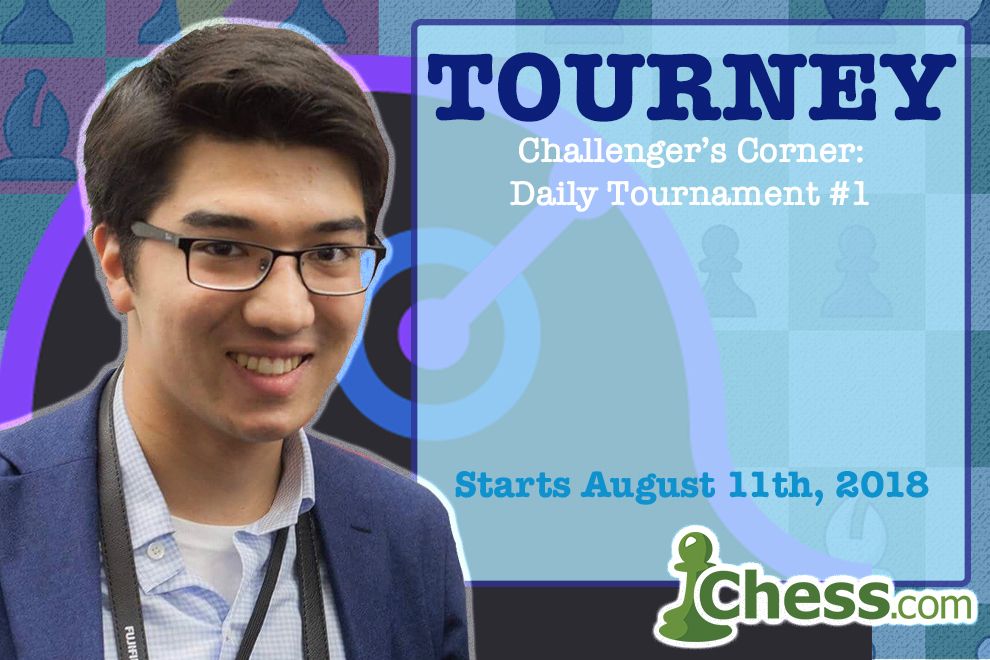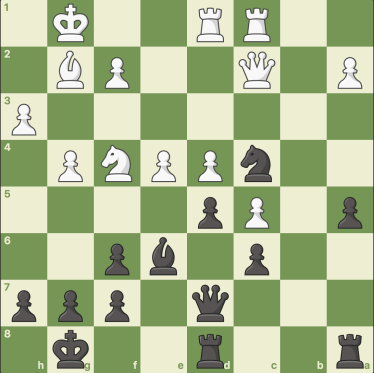
In the past few weeks, my relationship with chess has taken a drastic change. Between managing a full academic schedule and preparing to enter an arduous job search, my ability to study effectively and consistently has been effectively decimated. Honestly, knowing my schedule and workload now, I think my previous semesters pale in comparison, especially when you add on my chess.com streaming and responsibilities for the Pittsburgh Pawngrabbers. Perhaps you’ve been waiting to call me out for being unusually mum here (sorry!).
With all of the recent changes in my regular schedule, it’s really forced me to evaluate how I can approach chess differently, especially given my 30 rating point collapse last September.
Historically speaking, I think some my poor quality of play has been plagued by my own unrealistically high expectations. Failure to have a strong performance pushes even more pressure on to the next tournament until I break the cycle, only to follow that up with another disappointing showing, beginning the cycle again. A lot of stress, a lot of work – very little improvement.
However, with the copious amount of stress that this semester has brought, I think it’s actually engulfed my stress from chess entirely. I literally/physically cannot be more stressed than I am now. Which, while not ideal from a work-life balance standpoint, has actually forced me to improve psychologically in the limited time I do have over-the-board. I don’t have time to prepare for my opponents like I used to, or dwell on upcoming games, so my tournament appearances now just feel like breaks from school – which is what chess should be for us non-professionals, right? Here’s a couple perks I’ve noticed over the last few weeks:
- I am more confident – Perhaps you could argue that my confidence is misguided given my lack of preparation, but my new mindset allows me to feel like I have nothing to lose. I know there’s a lot of reasons why I shouldn’t be playing well right now, but I’ve been pushing those externalities aside, and just embracing that chess is hard.
- I am more creative – We saw a bit of this with my 5. g4 adventure last article, but I’ve actually been experimenting with a few openings for both colors this past month, and it’s given me new positions to explore. Some experiments have been more successful than others, but my games have become more interesting as a result.
- I am less emotional during games – If you’ve ever watched me play in person, I usually wear my emotions on my sleeve. But lately, when I reach critical positions I’ve been surprisingly calm, and I’ve even rejected more draw offers than I have ever previously. I think it’s in these moments where I think to myself “take the draw and do homework, or keep on playing?”. Not a professional set of mind, but I’ll take it. In games where I’ve been offered draws this past month, I’ve played on and scored 3.5/4 from roughly equal positions.
In turn, I would argue that my time management has slightly worsened, but the tradeoff is not too bad. I think another element that’s really helped is that internally, I’ve stopped making excuses for myself like, I would have played better if I didn’t have a midterm, I could have prepared more if I wasn’t trying so hard to be involved in the online chess community, and so forth.
Strong chess players are successful because they can play well in spite of their other conflicts. Most players I’m playing now have jobs, families, other obligations – I’m not the only active tournament player in the room who’s busy, so why excuse myself for it? When I lose now, I’m working really hard to ignore the particular distractions that may have caused me to fail, but rather embracing the fact that chess is hard, and using that as a vantage point for my next round. I can’t drop out of Pitt to play chess (or rather, won’t), but I can at least have a more positive mindset about my play.
But does this work? Perhaps this is not a sustainable approach in the long-run, but Caissa has been a particularly generous friend of mine since I last shared on Chess^Summit. After starting 2/2 in the Pittsburgh Chess Club’s Fred Sorensen Memorial, I tried main line 1. d4 (surprise!) against National Master Kevin Carl, and managed a draw from a position of strength. Though I probably should have continued playing instead of offering a half point, this game gave me a lot of confidence going into the next two rounds.

Composure Wins Games
The equal decision pitted me in a match-up with my former trainer NM Franklin Chen with the black pieces. Ugh this is literally the worst time to get this pairing. Franklin played a significant role in preparing me for the 2016 US Junior Open, and was thus (I would argue) is most familiar with my opening repertoire and weaknesses, barring my coach. To add insult to injury, having the Black pieces meant that Franklin had a week to prepare with White on a specific line, while I had to generally prepare my responses against 1 e4, 1 d4, 1 c4, 1 Nf3 – you get the idea. I guess a draw would be a favorable result. I did not have any expectations going in as I had yet to beat Franklin in a competitive game, and his opening understanding is much deeper than mine. Just get out of the opening.
Chen, Franklin (2123) – Steincamp, Isaac (2076)
1.e4 c5 2.Nf3 g6 3.c3 Bg7 4.d4 cxd4 5.cxd4 d5 6.e5 Bg4 7.Nbd2
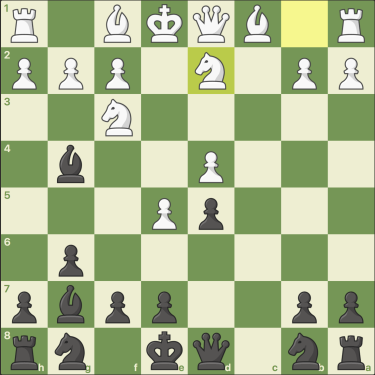
At this point in the game, I couldn’t tell if Franklin was actually playing out of his preparation, or was improvising. Either way, all I remembered was that I don’t take the knight on f3 in this line. 7…Nc6 8.h3 Bf5 9.Bb5

He spent some time here, which I took as him not expecting me to play …Bf5. While White has more space in the center, the knight on d2 slows down White’s queenside development. In the meantime, Black will set-up a French-like structure without the bad light-squared bishop. 9…Qb6 10.Qe2 e6 11.Nb3 Nge7 12.0–0 a6

Presenting White with an awkward decision. Should White play 13. Bd3, he will lose a lot of time as 13…Bxd3 14. Qxd3 Nb4 followed by Ra8-c8 will give Black a lot of queenside counterplay. At that point, the knight on b3 would be misplaced since an eventual …b7-b6 would kick out any Nb3-c5 ideas. Avoiding the pressure, Franklin instead chose to give up the bishop pair with 13.Bxc6+ Nxc6 14.Be3 Qb5 15.Qxb5 axb5

At this point, I was really happy with how the opening concluded. Black is more active with the rooks ready to launch to the queenside, and I hold the bishop pair going into the queenless middlegame. While Black’s play is fairly simple, White will need to be both creative and accurate to hold the balance. Without any natural pawn breaks, White erred with 16.Ne1?, with the idea of g2-g4, followed by f2-f3 to snare my f5 bishop.

This felt like a psychological turning point. White spent about 5 minutes on each of the next three moves, while my moves were mostly forced. This gave me a time advantage that I was able to keep for the rest of the game and press with in the late endgame. While the idea of trapping my bishop may be appealing, White’s voluntarily disconnected his knights, and its not quite clear where the knight can go from e1. 16…h5 17.f3? h4 18.Rf2

With the change in pawn structure, we can see that Black is now clearly better. White is having to spend time to find a new home for the e1 knight, and in the meantime, I can activate my dark squared bishop via f8. 18…Bf8 19.Bg5 Be7 20.Bxe7 Kxe7

While I give up my bishop pair, White now cannot play on the dark squares, so my h4 pawn is no longer a real weakness. With the simplification, I can revert to my queenside conquest. 21.Rd2 b6 22.Rc1 Rhc8 23.a3 Ra4 24.Kf2 Rc4 25.Rxc4 bxc4 26.Nc1

While it’s not decisive yet, my advantage is growing. White’s pawns on the queenside are nagging weaknesses since the pawn structure is fixed. Furthermore, each of White’s knights are pretty anemic. As long as I can keep my hold an push it should be smooth sailing… 26…Na5 27.Na2 Nb3 28.Rd1 f6?=

I had a jolt when I played this move because I realized I had erred here. This gives White the opportunity to clear the e5 square for a knight, which make the position extremely difficult to win. Luckily for me, Franklin opted for a different continuation, but my advantage lessened since White’s active king is able to make up for his poor knight play. 29.f4 fxe5 30.fxe5 Rf8 31.Ke3 g5 32.Nf3 Rg8 33.Rh1

As I was returning, Franklin offered me a draw and I made a point of declining before I sat down. The position is somewhat difficult still, and psychologically it can be easy to give up. That being said, only Black can win here – White’s knights are poor, and g2 and b2 are both promising targets. I wasn’t sure how I would carry it out, but I was seeing an idea of bringing my knight on b3 all the way to f5. Maybe a …g5-g4 insertion becomes possible. Why not keep playing? 33…Na5 34.Nc3 Kd7 35.Ne2 Bd3 36.Nc1 Be4 37.Ne2 Bd3 Always repeat! 38.Nc1 Be4 39.Ne2 Nc6

Now my plan is coming to life! White can’t stop my knight from coming to f5. Once my knight reaches the destination, I’ll venture into various …Kd7-c6 ideas to activate my king and push on the queenside with …b6-b5. 40.Rg1 Ne7
It’s worth noting that 41.g4 is not a real option as after 41…hxg3 42.Nxg3 Bxf3 43.Kxf3 Rf8+ 44.Ke3 Rh8 45.Rh1 Rh4 Black is clearly better.

The game continued with a couple repetitions and slow progress from Black on the queenside. 41.Kd2 Nf5 42.Nh2 Bd3 43.Nc1 Be4 44.Ne2 Kc6 45.Ng4 b5 46.Nf6 Rg7

Franklin’s managed to plop his knight onto the f6 square, but it must have been a cold shower when he realized that it doesn’t change the impression of the position. The knight has no targets from here, and Nxe4 will only help me create a passed pawn and open the d5 square for my king. With only limited time here Franklin tried his best to hold with passive play. 47.Kc3 Bd3 48.Nc1 Ng3!

Having to lose a tempo due to 49. Nxd3 Ne2+, White had to concede 49.Re1, giving me time to tickle the chronically weak g2 pawn with 49…Be4 forcing 50.Nxe4 Nxe4+ 51.Kc2 Rf7 and with the file, my advantage is near decisive.

Now both in time trouble, I did my best to keep calm and bludgeon my way into the kingside. 52.Re2 Ng3 53.Rd2 Nf1 54.Re2 Rf4 55.Kc3 Ng3 56.Rc2 Re4 57.b3 I stopped notating here because I was confident that this was the final straw in White’s position. 57…Nf5 58.bxc4 dxc4 Opening the d5 square for my knight while limiting White’s potential counterplay with the a-pawn. 59.Ne2 Ne3 60.Ra2 Nd5+ 61.Kd2

61…Rxe2+!–+ 62.Kxe2 Nc3+ 0–1
And just like that, I hit 3.5/4 in the tournament, a personal best for the four round mark at any Pittsburgh Chess Club event. My confidence soared following the match, and it was really feeling like all of my previous studies were finally paying off. Just a few days later I even managed a draw against a 2700+ (chess.com, not FIDE) rated International Master in the Royal Arena Kings event:
So things were going well… I was finally starting to feel in the driver’s seat with my play, which is hardly ever a bad sign.
Reality Check
Before my fifth round of the Sorenson Memorial, the weekend offered the Pennsylvania State Championships, and immediately, my level of play seemed much worse than the week before. I dropped to 0.5/2 when my opponent found this nice tactical gem to force immediate resignation!

After an embarrassing blindspot early in the game to drop an exchange, I was starting to make a comeback, and if I can win the pawn on b3, I’ll actually have some winning chances. That’s why it was imperative that White find the showstopper 27. Bf6+! to close the curtains and prompt resignation. 27…Kxf6 28. Qe7+ Kf5 29. g4# and 27…Bxf6 28. Qf8+ Kh7 29. Qg8# so I fell back to earth.
My lone bright spot of the tournament was an endgame grind Sunday morning to reach 2/4 heading into the final round. Without getting into too much detail, I’ll share the critical moment:

This was a pretty tricky moment in the game, and while I wanted to play 19…Qe3 to stop White from castling, I couldn’t keep the attack going. White’s idea of Ng3-e4, followed by Qc7-Qc5 is quite strong since the queen trade is forced and the endgame is worse, since my lack of development is quite limiting. After 20. Ne4, I realized that neither …Ne7-d5 or …Ne7-f5 yields anything, and instead found the critical 20…b4!, opening the possibility of …Bc8-a6 should White dare take the b4 pawn. Play continued 21. Qc5 Qxc5 22. Nxc5 bxc3 23. bxc3 Nd5 24. Kd2 Nf4 25. Bf1 Rb8, with Black seizing the initiative:

Now, unlike the endgames before, Black is clearly in the driver’s seat. My pieces are developing with tempi, and unlike before instead of having a weak b5 pawn, it’s White who holds the biggest weakness on c3! After four hours of grinding the position, White finally crumbled. I guess that makes favorable endgame transpositions tactics too!
Nice win aside, I mangled a completely winning position in the final round to finish 2/5, so the tournament as a whole proved to be a disappointment. While there were a bunch of small tweaks I wanted to make from my mistakes before my Tuesday night match-up, my coursework required attention, and the two days passed quickly, leaving me no real time to prepare.
I tried something new with Black, and immediately the position became quite double-edged. My opponent was very close to winning when he missed 32. Rxe2! +-

I understood that this was a winning shot before I played 31…Qh5, but there was really no way to avoid this. I tried to maintain a calm posture and let White’s clock work its magic. Under pressure, White opted for 32. Bg6?? which loses instantly with 32… Rxf2! and now White realizes the queen cannot be captured:

White tried to survive after 33. Rxe2 Qxe2 34. Nhf3 but 34…Rh2+ forced resignation since mate is inevitable. A scary way to jump to 4.5/5 – after checking the game with Stockfish, it’s quite evident that I probably did not “deserve” to win… What can I say? I guess in the eyes of Stockfish it’s a miracle that I win any of my games.
Despite an ugly finish, the win guaranteed a share of first place, and a peaceful draw this past Tuesday sealed the clear tournament win for me. While the competition was not significantly higher rated than me, it was a great feeling to win a tournament for the first time since my Marshall Chess Club appearance in 2016.
Steady Finish
I was able to end October on an emphatic note with my Pittsburgh Chess League match up against NM Thomas Magar, as the University of Pittsburgh took on the Monroeville Chess Club. With the match level at 1.5-1.5, my opponent offered a draw to lock a 2-2 tie in this position:

I found rejecting this offer to be somewhat psychologically difficult – I had been defending the entire game, and not that it should matter, but my opponent was higher rated. So a deep think ensued…
With White’s last move, 31. Kh2, my opponent has blocked in his rook, and so …Qd7-e7 asks White to find resources to deal with …Rf6-f8. With this slowing down any Ng3-e4 ideas, I was able to convince myself that I wanted to see what he would do after 31…Qe7. After 32. Nxf5 Rxf5 33. Rh3 Qg5, I’m clearly better, as the resulting rook endgame gave me a material advantage:

White lost the h-pawn, and after trading a pair of rooks, White realized that his rook has no way to become active, my h-pawn is an unstoppable force. After trading the a-pawns, we reached this position:

Here White has an uncomfortable position. Aside from …Ra7-g7 ideas, I can always go after the b3 pawn or place my rook on the 6th rank to support my only weakness while assisting the h-pawn up the board. With no real active ideas left, White tried 49. f4 exf4+ 50. Kxf4 Rf7+ 51. Ke4

Now we realize that Black’s position is improving. The White king looks active on e4, but it actually can’t make progress, as my rook and the d6 pawn cut it off. While White’s g1 rook cuts off my king, it can’t infiltrate my position effectively, which is a problem since he will need to stop my h-pawn after 51…h4. White tried to put his rook behind the pawn, but it’s already too late. 52. Rg4 Kh5 53. Rg8 Rf6 54. Rh8+ Kg5 55. Rg8+ Rg6:

Should White trade the rooks, the pawn endgame is winning, so my opponent has to surrender the g-file. If he plays 56. Rh8, I will simply play 56…Kg4 and …h4-h3, so the only viable option was 56. Rf8, and after 56…h3 57. Rf5+ Kg4 58. Rf4+ Kg3, my opponent lost on time, but the result is fairly clear:

Black will simply escort the pawn to a1, and should White attempt 59. Kf5 Rf6+! will win the pawn endgame, as the rooks will come off the board.
What a month! After a September that saw me drop as low as 2066, I somehow found a way to recover completely and re-break 2100 for the umpteenth time:

Honestly in writing all of this, I think one thing has become extraordinarily clear – chess is hard. And it should be! We’re all going to hit rough patches, there will always be bad games, and we will always find a way to ask ourselves “how did I miss that??”. My biggest lesson from October is, don’t fight normal! Instead, actively look for ways to improve, and don’t find any external reasons as to why you lost. If you made a blunder, own it – don’t let it hold you back. Don’t give yourself an excuse to not play your best.
If you’re out there Caissa, thanks – this was exactly the kind of month I needed!



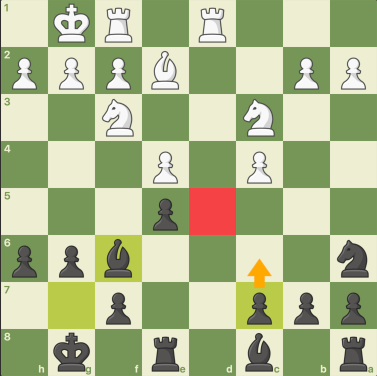




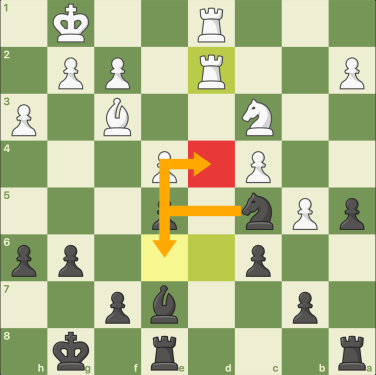



























 My work with calculation is a lot more concrete in terms of chess development. Per my coach’s recommendation, I’ve been working through
My work with calculation is a lot more concrete in terms of chess development. Per my coach’s recommendation, I’ve been working through 









